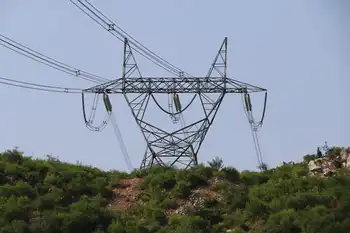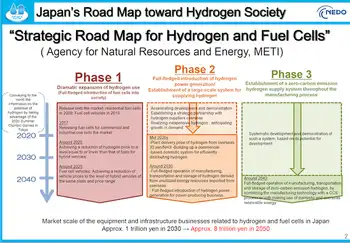ISO New England releases plan for regionÂ’s power grid
- The 2012 Regional System Plan RSP12, a comprehensive report that identifies transmission upgrades and resource additions needed to maintain a reliable supply of electricity in New England through 2021, was approved by the board of directors of ISO New England Inc. ISO, the operator of the regional power system and wholesale electricity markets. ISO New England has issued the RSP each year since it assumed power system planning responsibility in 2000.
“For 12 years, the Regional System Plan has served the region as a record of both power system progress and power system needs,” said Gordon van Welie, president and CEO of ISO New England Inc. “This year’s report reviews projects that have made New England’s power grid more reliable and efficient and identifies future system improvements and initiatives. It’s the product of a year’s collaboration among the ISO, public officials, state agencies, market participants, consumer advocates, and other policy and industry stakeholders.”
This annual planning process proactively identifies reliability needs of the six-state power system and describes the transmission projects that can address these needs, as well as provides information about the amount, location, and characteristics of market responses, such as generation or demand resources, that also could meet these needs. The document also presents infrastructure development to date, reviews regional initiatives underway, assesses the impact that federal and state policies could have on the New England electric grid, and covers a variety of other industry-related topics.
PROGRESS REPORT
Transmission: From 2002 through June 2012, 400 transmission projects required for power system reliability have been put into service, representing $4.8 billion in infrastructure improvement. Of those 400, eight are major 345 kilovolt kV transmission projects. These transmission upgrades reinforce critical areas of the grid where demand is highest, such as in Southwest Connecticut and Boston, as well as areas that have experienced significant load growth, such as Northwest Vermont. These and other projects help maintain system reliability and enhance the regionÂ’s ability to support competitive wholesale electricity markets.
Generation: More than 14,430 megawatts MW of new generation have been constructed in New England since 1997.
Demand resources: More than 2,000 MW of demand resources currently are part of New EnglandÂ’s resource mix, and more than 3,600 MW are expected to be available by 2015.
OUTLOOK
Capacity: The most recent Forward Capacity Market auction shows that the New England region should have adequate resources to meet consumer demand through 2015/2016. However, the capacity resources in the Northeast Massachusetts/Boston area are projected to marginally meet demand for that area for the 2015/2016 time frame, with a projected 59 MW surplus for that load zone.
Demand forecast: Energy consumption is projected to grow an average 0.9 percent annually over the next 10 years, while summer peak demand is expected to grow by 1.5 percent per year.
Transmission upgrades: Additional transmission upgrades identified for meeting reliability requirements are under construction, have been approved in state-level siting proceedings, or are being prepared for state siting proceedings. These include the Maine Power Reliability Program MPRP, upgrades in Southeastern Massachusetts, and the New England East-West Solution NEEWS, which comprises several transmission projects in Massachusetts, Connecticut, and Rhode Island. Additional projects have been proposed to reinforce the reliability of New EnglandÂ’s power system.
PLANNING FOR THE FUTURE GRID: ISO NEW ENGLAND, REGIONAL, AND STATE INITIATIVES
Strategic Planning Initiative: ISO New EnglandÂ’s Strategic Planning Initiative, launched in 2010, continued in 2012 with studies and other analyses to more precisely assess challenges expected to affect the New England power system in the coming years. These challenges are associated with resource performance and flexibility, increased reliance on natural gas, retirement of generators, integration of variable resources, and alignment of markets with planning. The Strategic Planning Initiative is addressing these issues to ensure continued reliability and an efficient marketplace in the long term.
Energy-efficiency forecasting: The ISO, with stakeholders, developed a methodology to forecast long-term energy-efficiency EE savings from state-sponsored programs in all six New England states. The regionÂ’s EE forecast shows substantial energy savings resulting from energy-efficiency initiatives and these results are being incorporated into the system planning process and in regional transmission needs assessments and solutions studies. The EE forecast already is having an effect on power system planning. Recently, the reliability need for proposed transmission projects in New Hampshire and Vermont was reexamined, and several projects could be deferred, in part because of the EE forecast.
ADDITIONAL HIGHLIGHTS Fuel mix: New England is increasingly dependent on natural gas as the primary fuel for generating electricity, while the use of oil- and coal-fired generation is declining. Between 2000 and 2011, electricity generated by natural-gas-fired power plants grew from about 15 percent to more than 50 percent. At the same time, electric energy produced by oil units declined from 22 percent in 2000 to less than one percent in 2011, and energy from coal plants fell from 18 percent in 2000 to about six percent in 2011. The rising environmental and economic costs associated with oil and coal have made it difficult for some of these power plants to compete against generators that use lower-cost, lower-emitting fuel sources, such as natural gas.
Renewable Portfolio Standards and similar policies: Five New England states have adopted Renewable Portfolio Standards RPSs, and Vermont has a similar goal for increasing total generation from renewable resources. Taken together, the statesÂ’ RPSs and VermontÂ’s similar goals call for renewable resources and energy efficiency to supply 31.8 percent of New EnglandÂ’s projected electric energy by 2021.
Environmental regulations: New and pending changes to federal air and water regulations will affect existing coal-, oil-, and gas-fired steam generators across the region. In addition to the economic pressures facing some of the older fossil-fuel-fired plants, new environmental regulations over the next decade could require some generators to make significant investments in environmental-compliance retrofits, which could lead to the retirement or repowering of certain generators. Under the Strategic Planning Initiative, the ISO has initiated a study to better quantify the resource implications of existing and pending regulations and will continue to closely monitor how federal and state environmental policy changes may affect the region.
New England emission rates: In the past decade, New EnglandÂ’s emission rates for sulfur dioxide SO2, nitrogen oxide NOX, and carbon dioxide CO2 have declined, primarily as a result of natural-gas-fired generators with lower emissions producing a larger percentage of the regionÂ’s electricity than other fossil-fuel-fired generators with higher emissions. In addition, oil- and coal-fired power plants have added emissions controls, further contributing to a decline in emissions. Compared with 2001, the 2010 average emission rate for SO2 declined by 64 percent, NOX by 54 percent, and CO2 by 11 percent.
THE ROLE OF PLANNING IN NEW ENGLAND
The annual Regional System Plan is developed to meet requirements established by the Federal Energy Regulatory Commission, the North American Electric Reliability Corporation, and the Northeast Power Coordinating Council. Each RSP is a snapshot in time, and the results are revisited as needed based on the latest available information. The RSP is produced in accordance with the requirements set forth in Attachment K of the ISOÂ’s Open Access Transmission Tariff OATT.
Related News

EU outlines $300 billion plan to dump Russian energy
BERLIN - The European Union’s executive arm moved Wednesday to jump-start plans for the 27-nation bloc to abandon Russian energy amid the Kremlin’s war in Ukraine, proposing a nearly 300 billion-euro ($315 billion) package that includes more efficient use of fuels and faster rollout of renewable power.
The European Commission’s investment initiative is meant to help the 27 EU countries start weaning themselves off Russian fossil fuels this year. The goal is to deprive Russia, the EU’s main supplier of oil, natural gas and coal, of tens of billions in revenue and strengthen EU climate policies.
“We are taking our ambition to…




